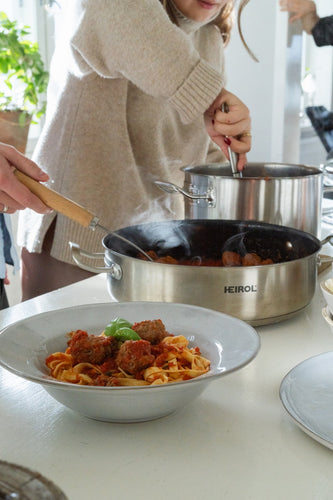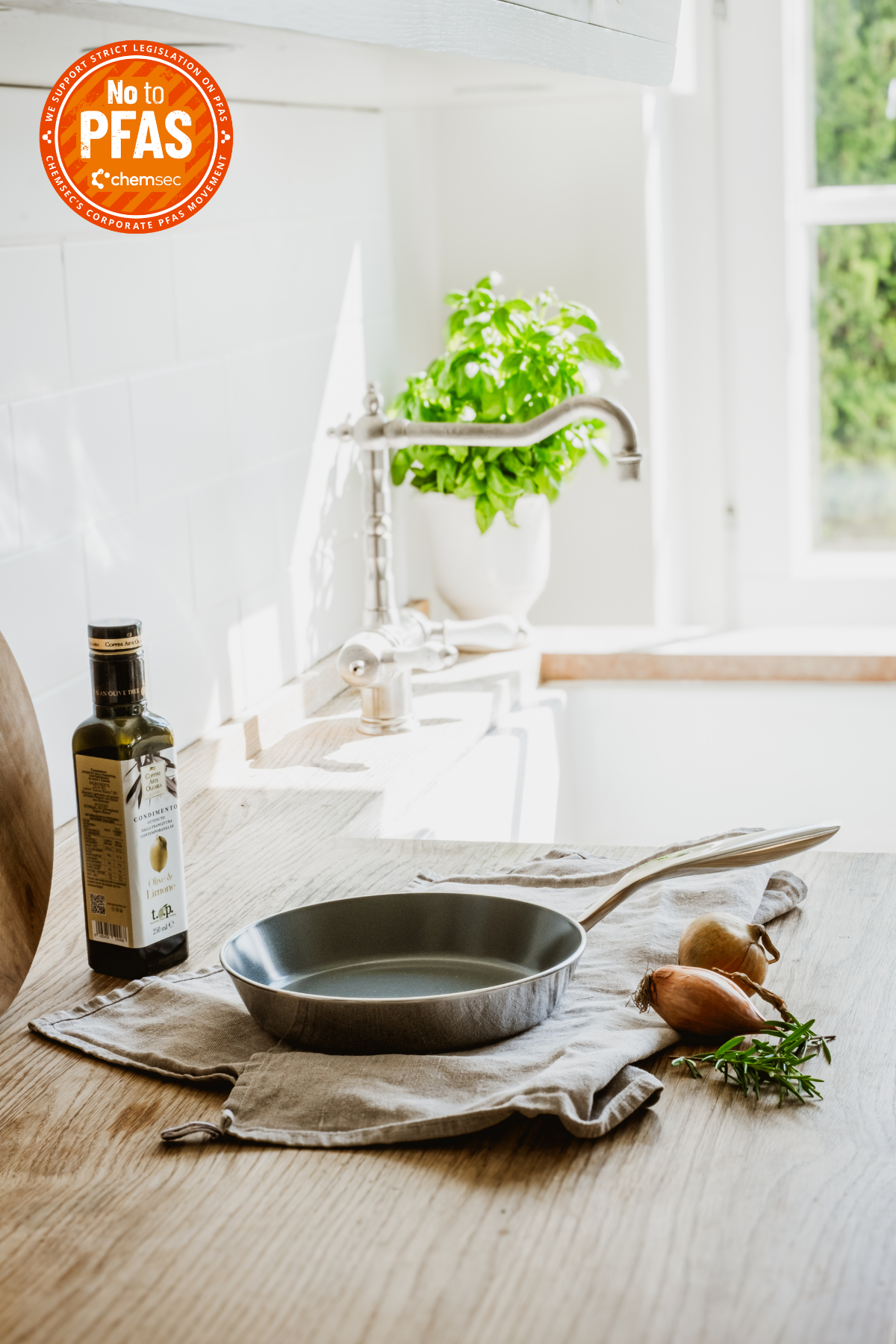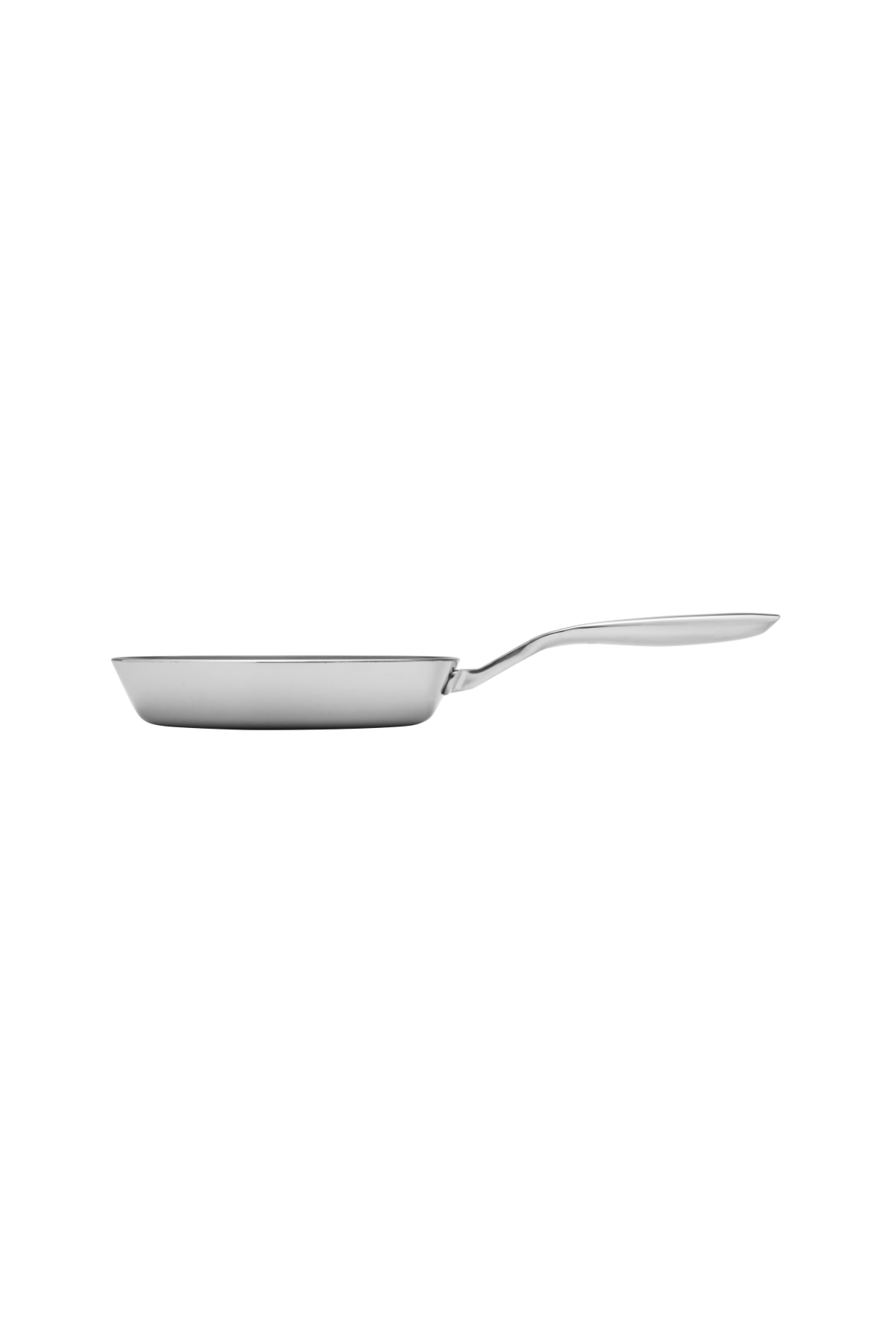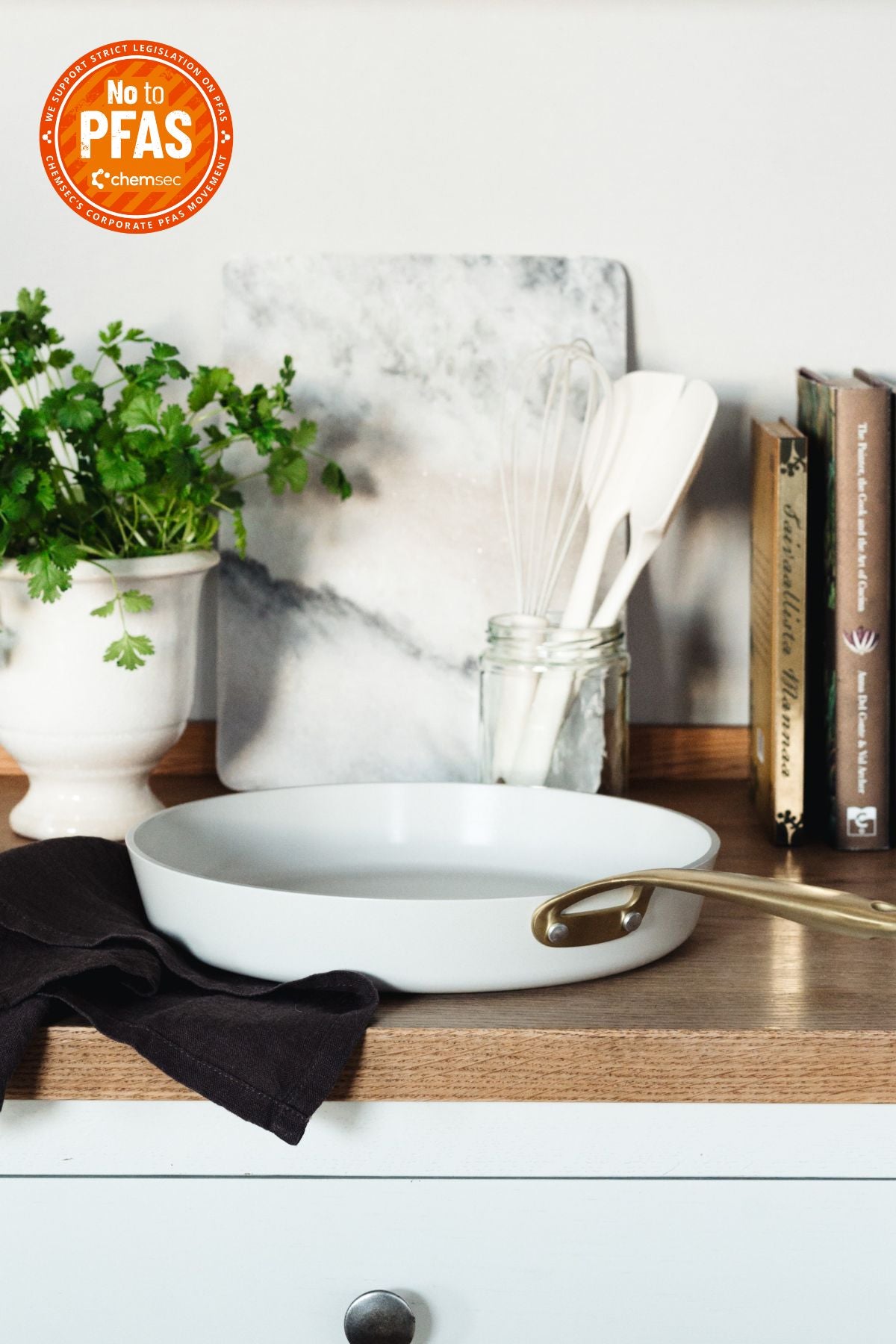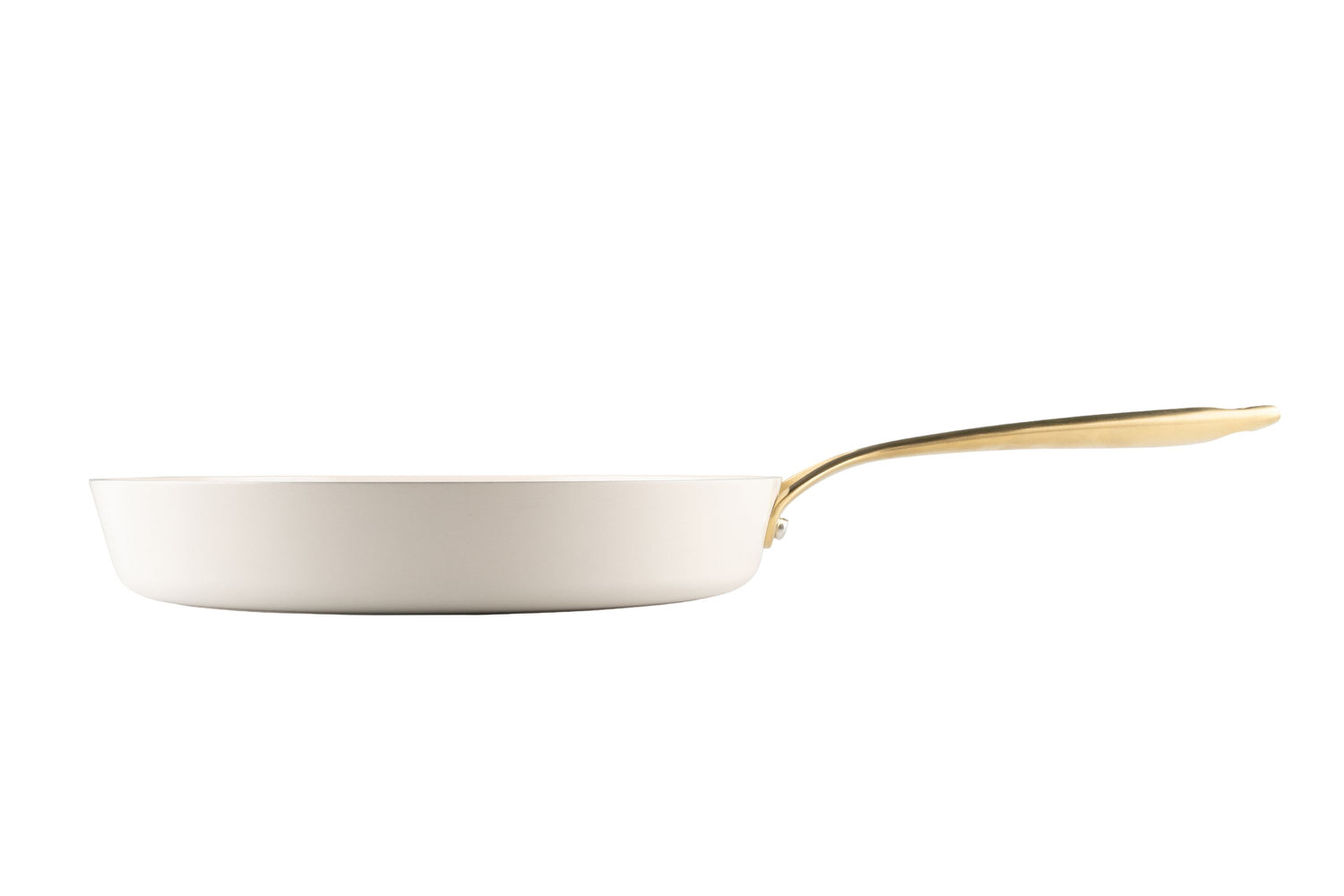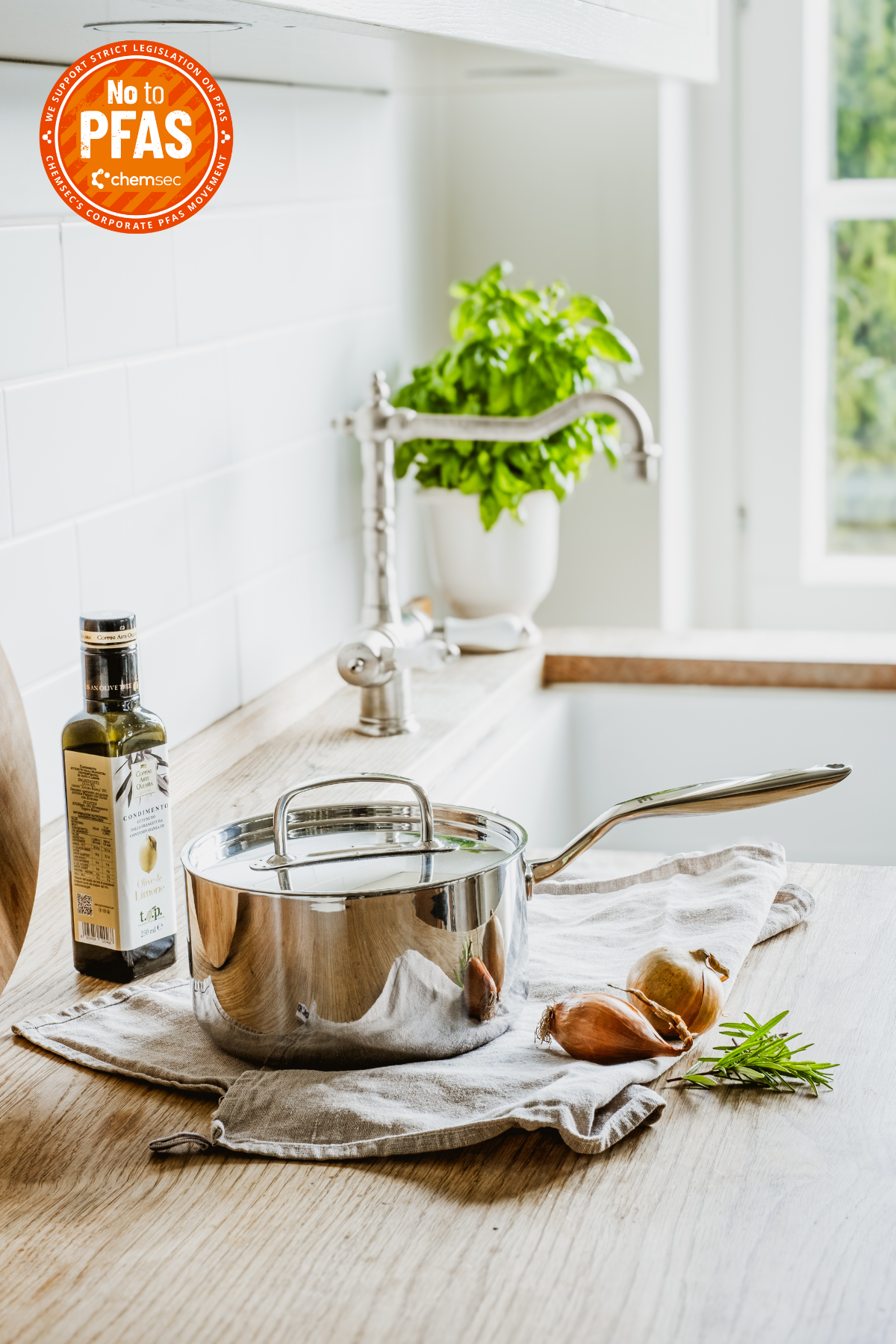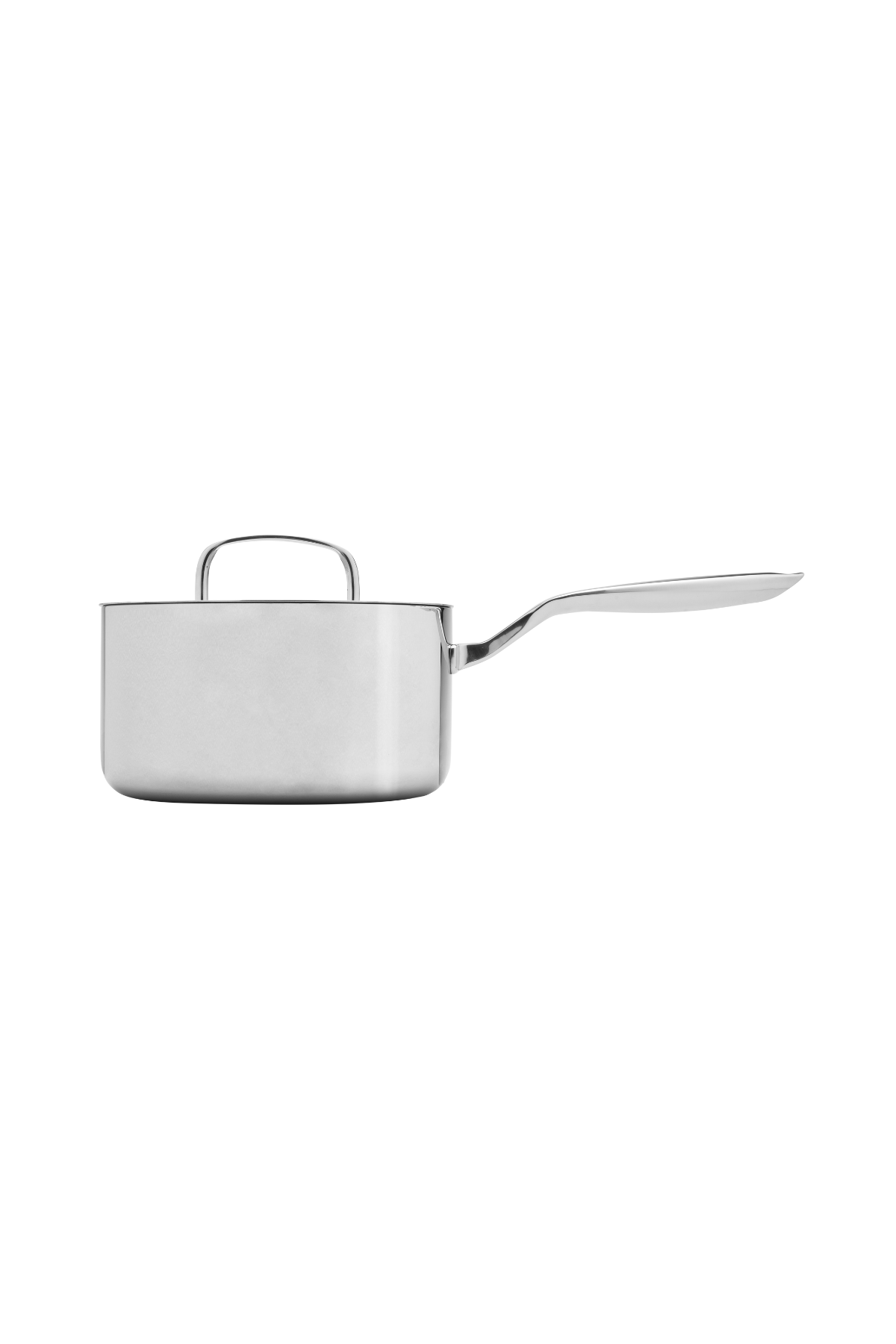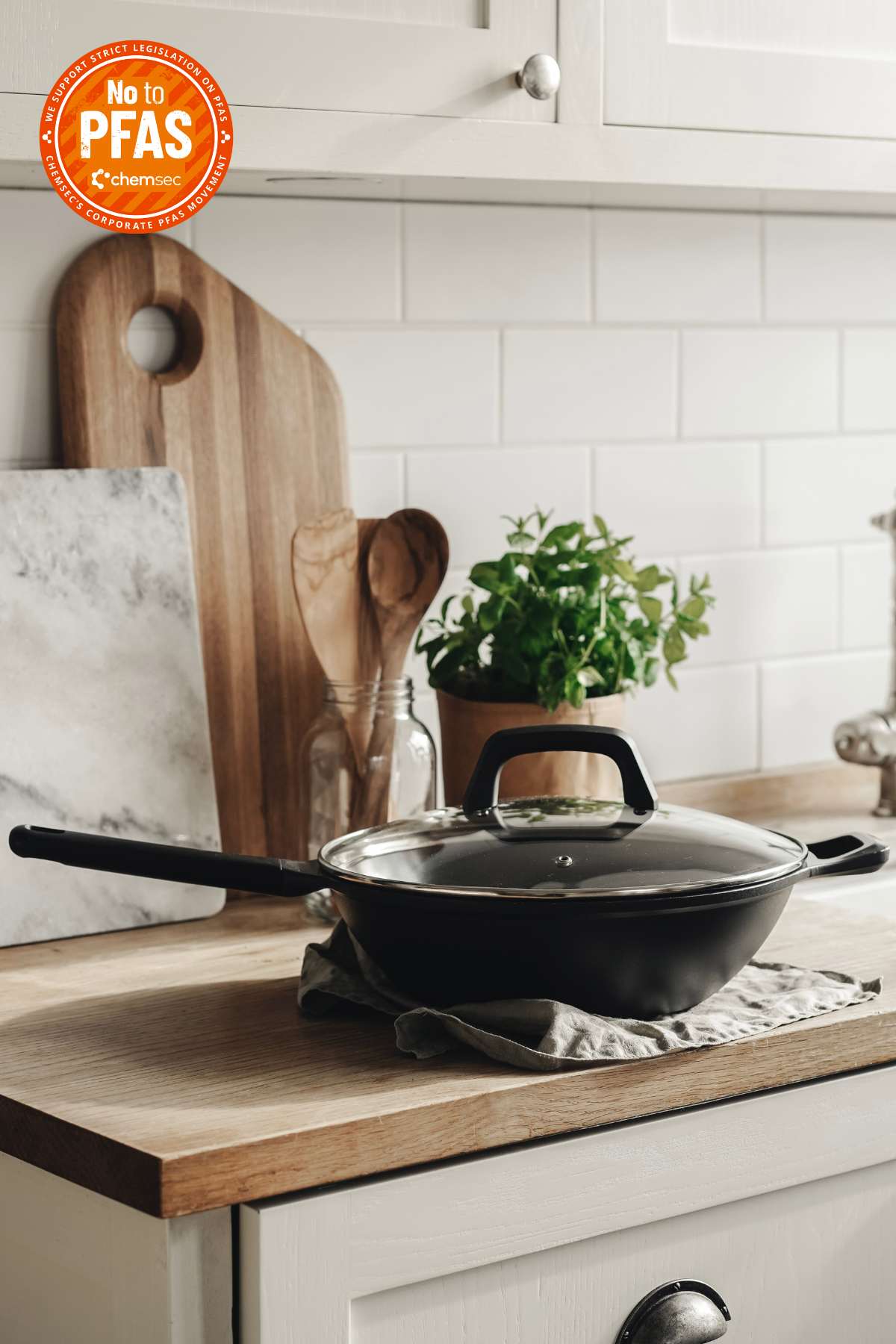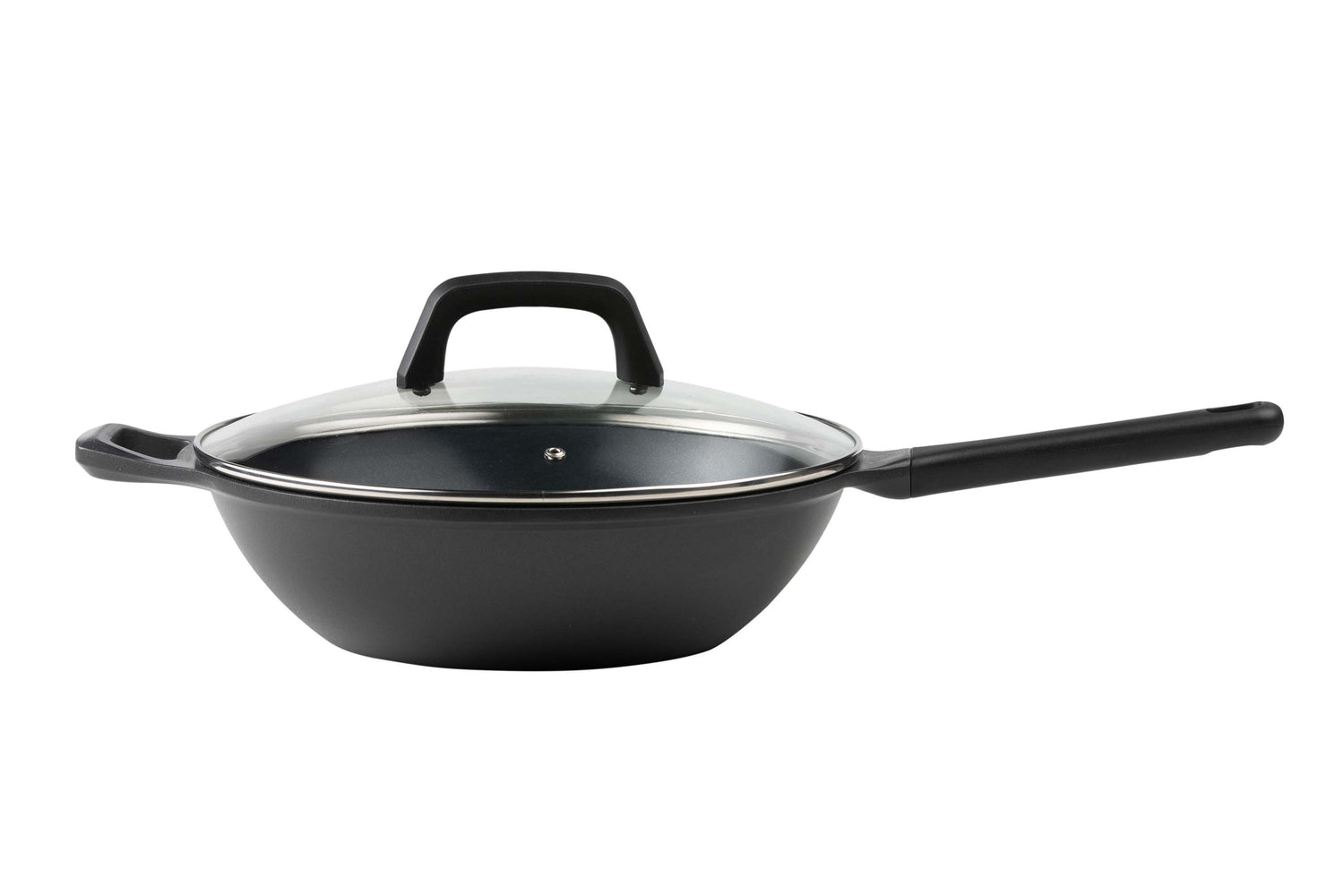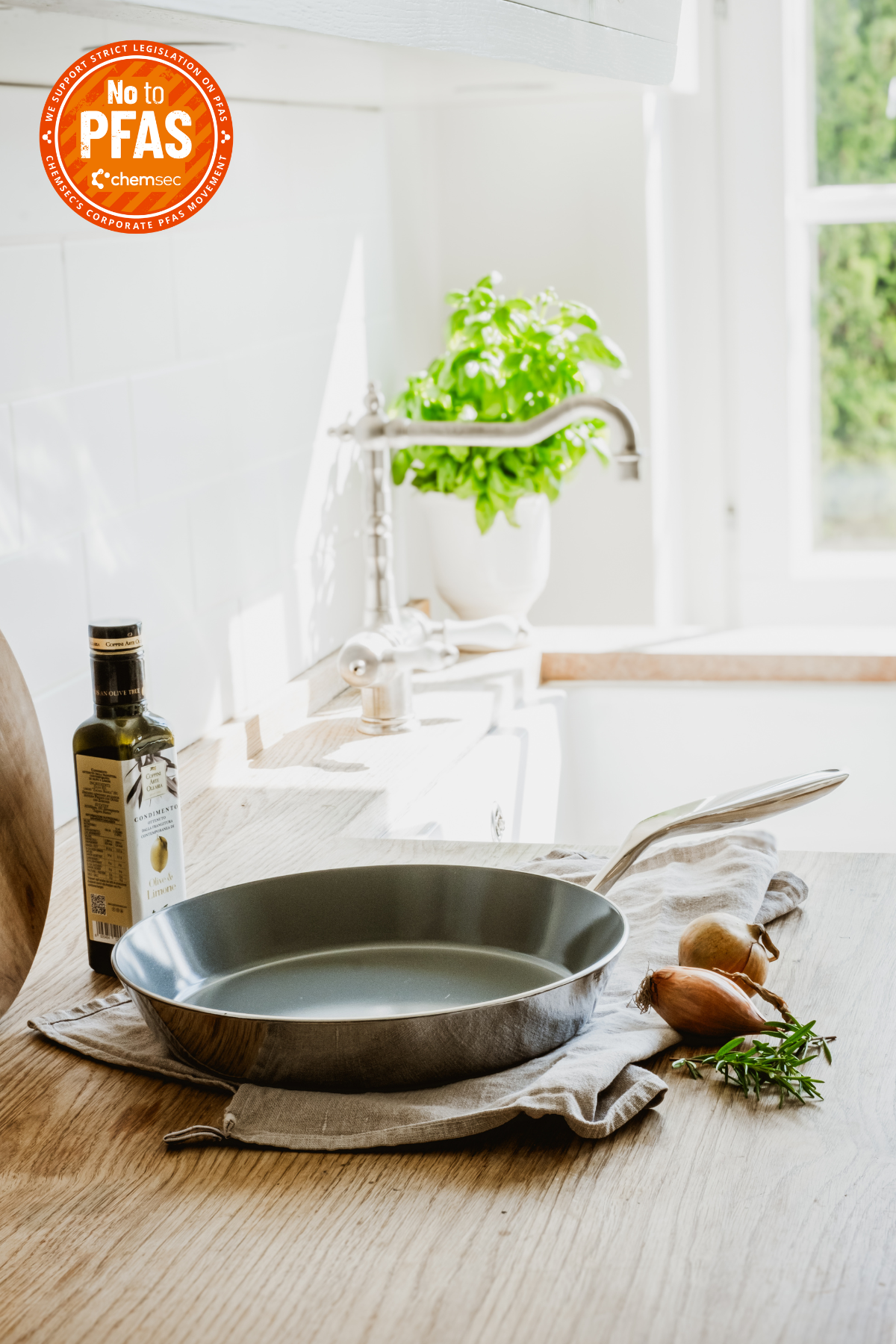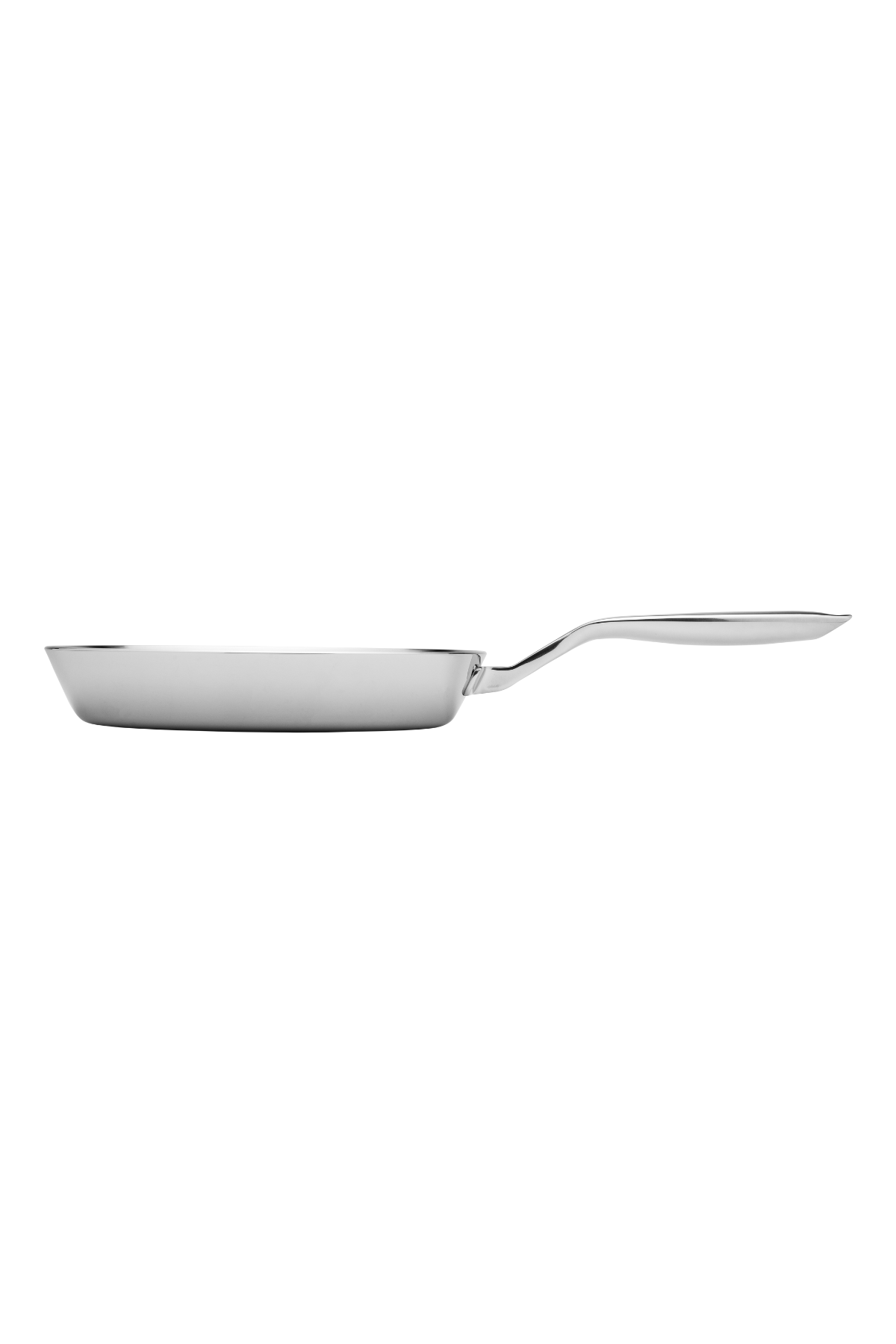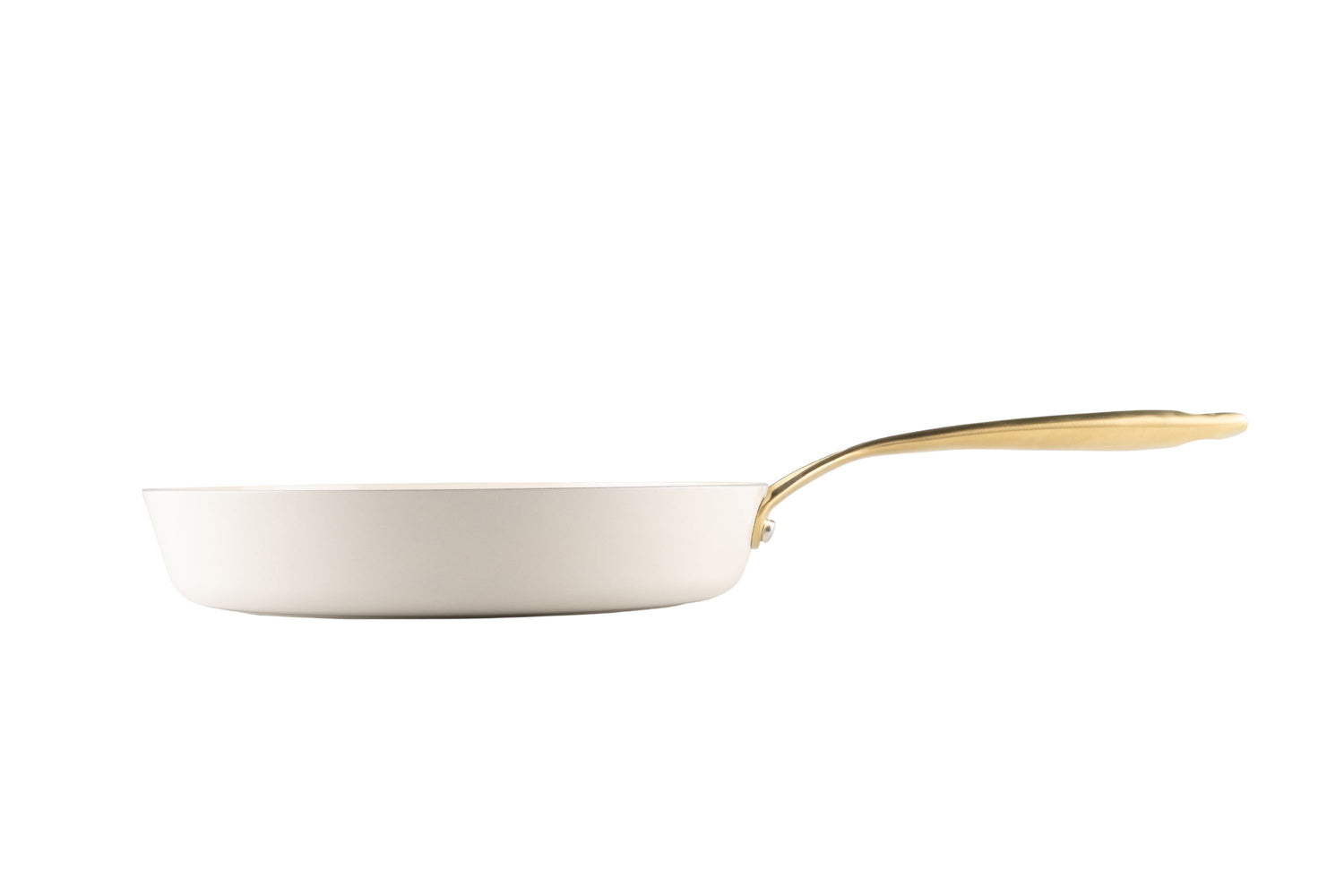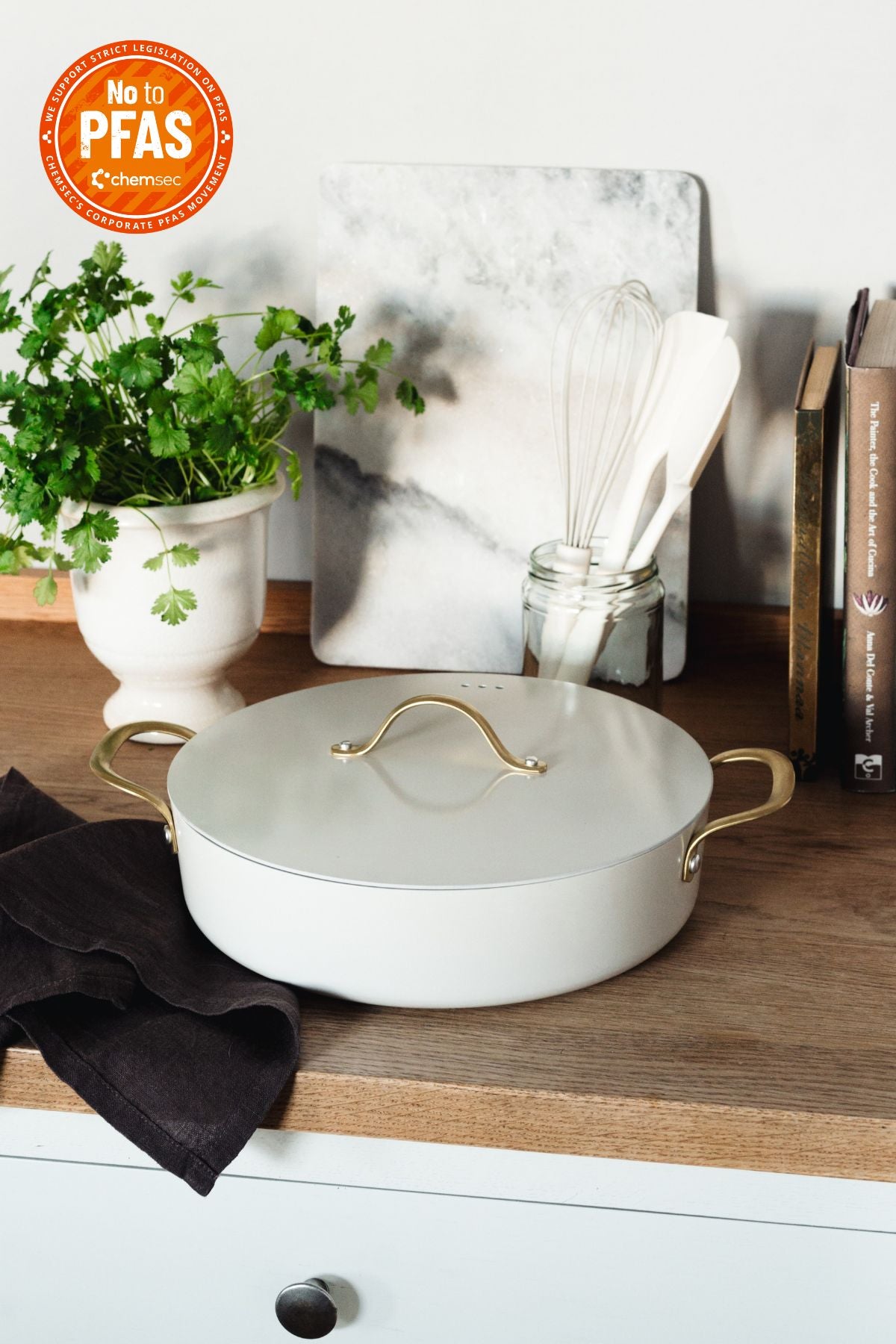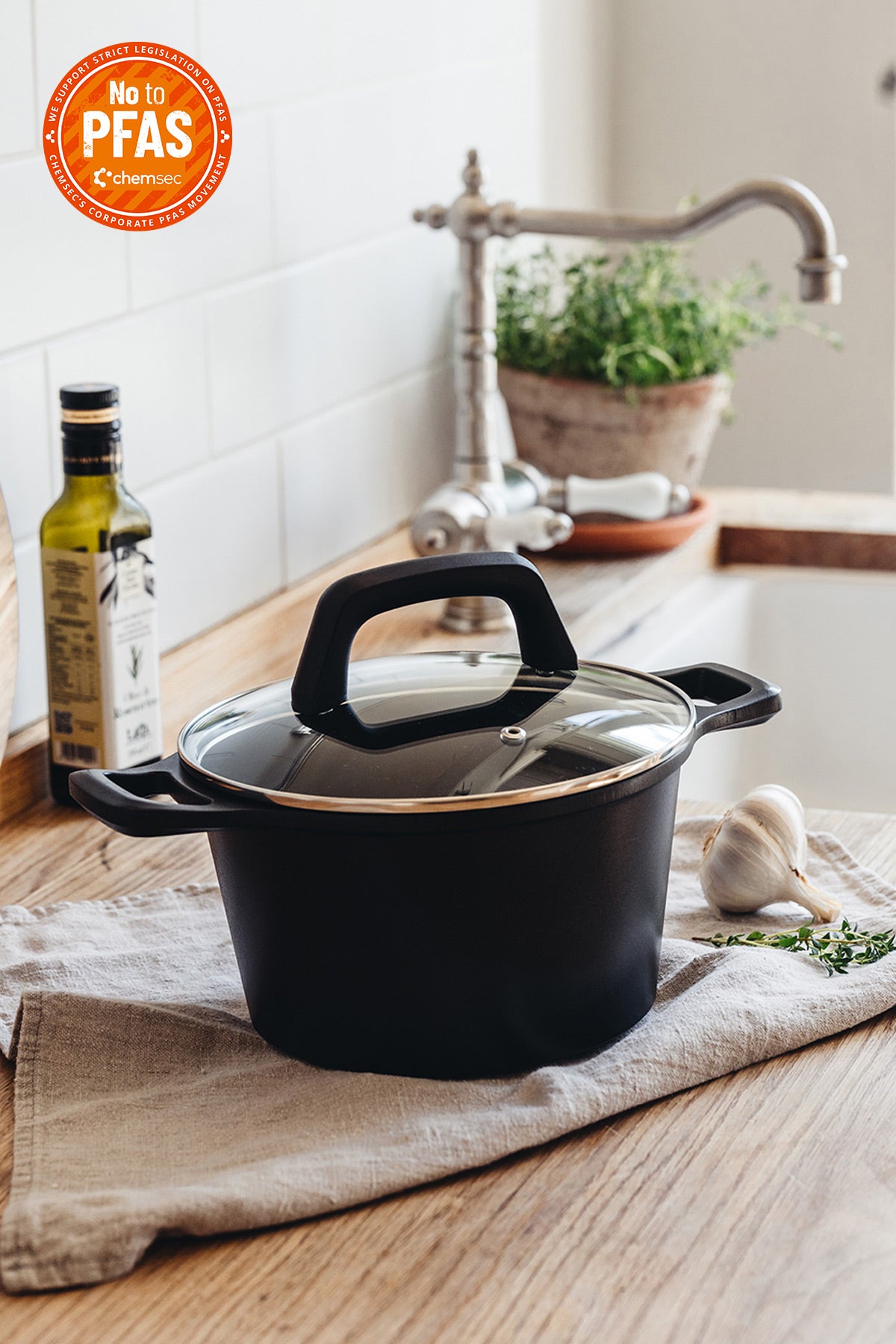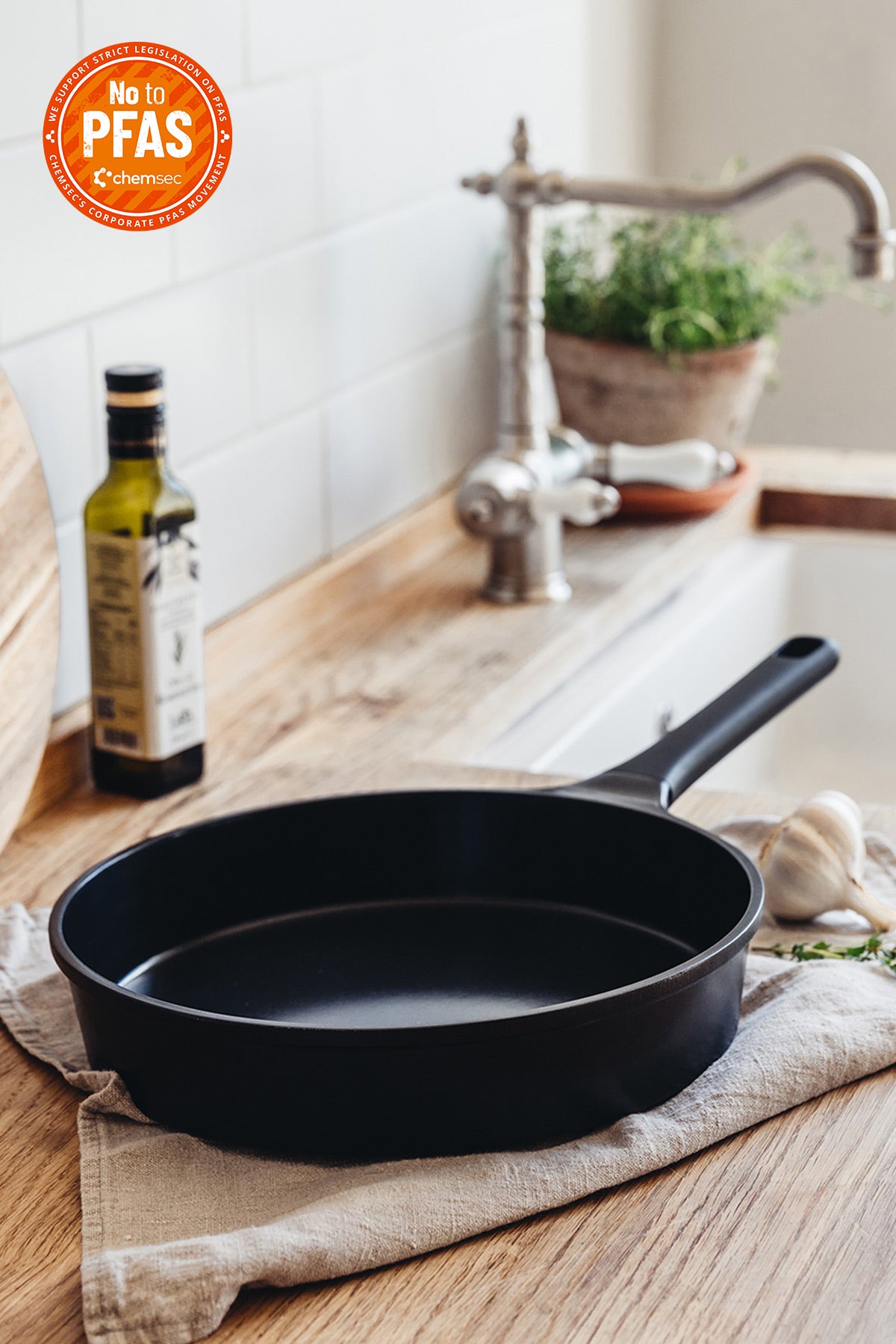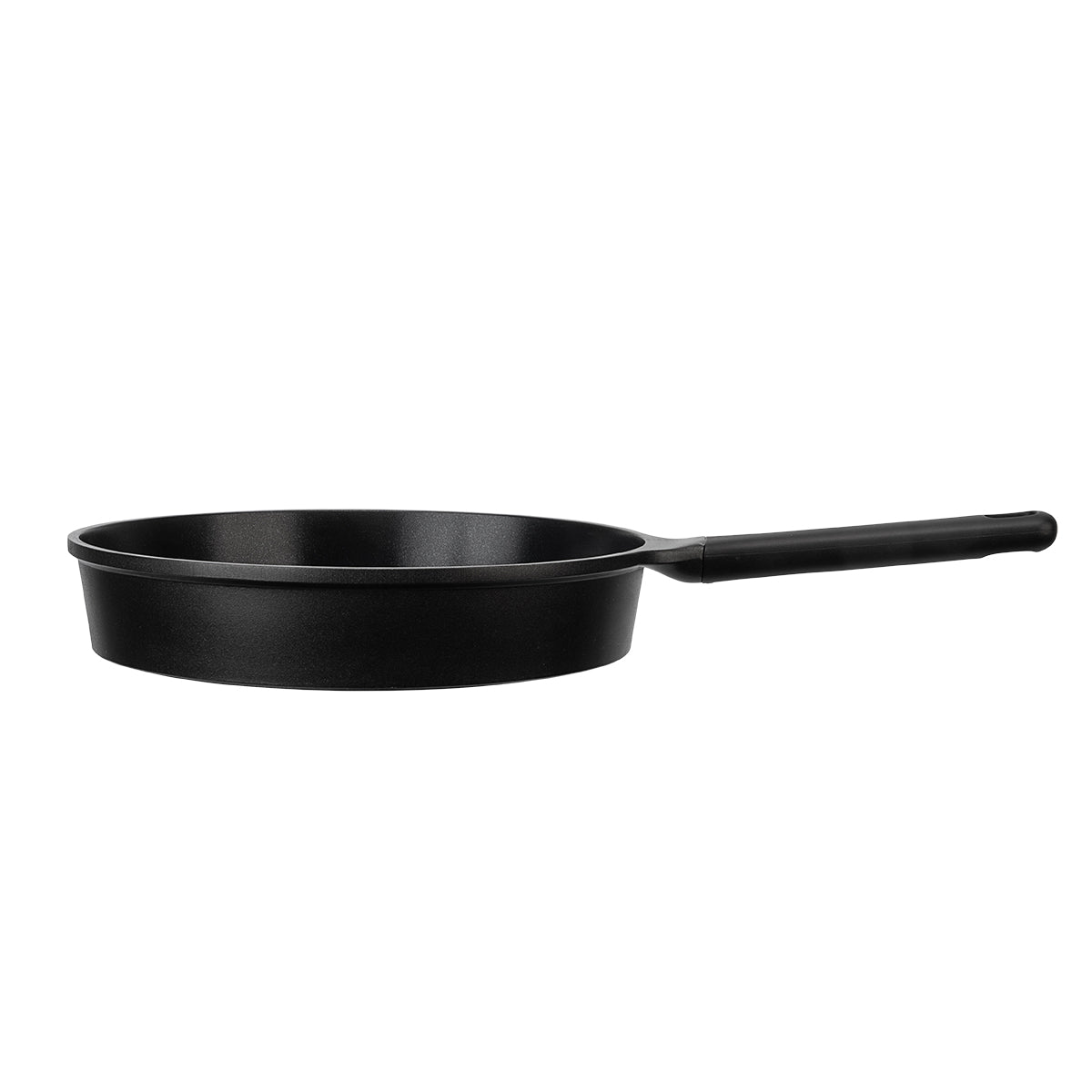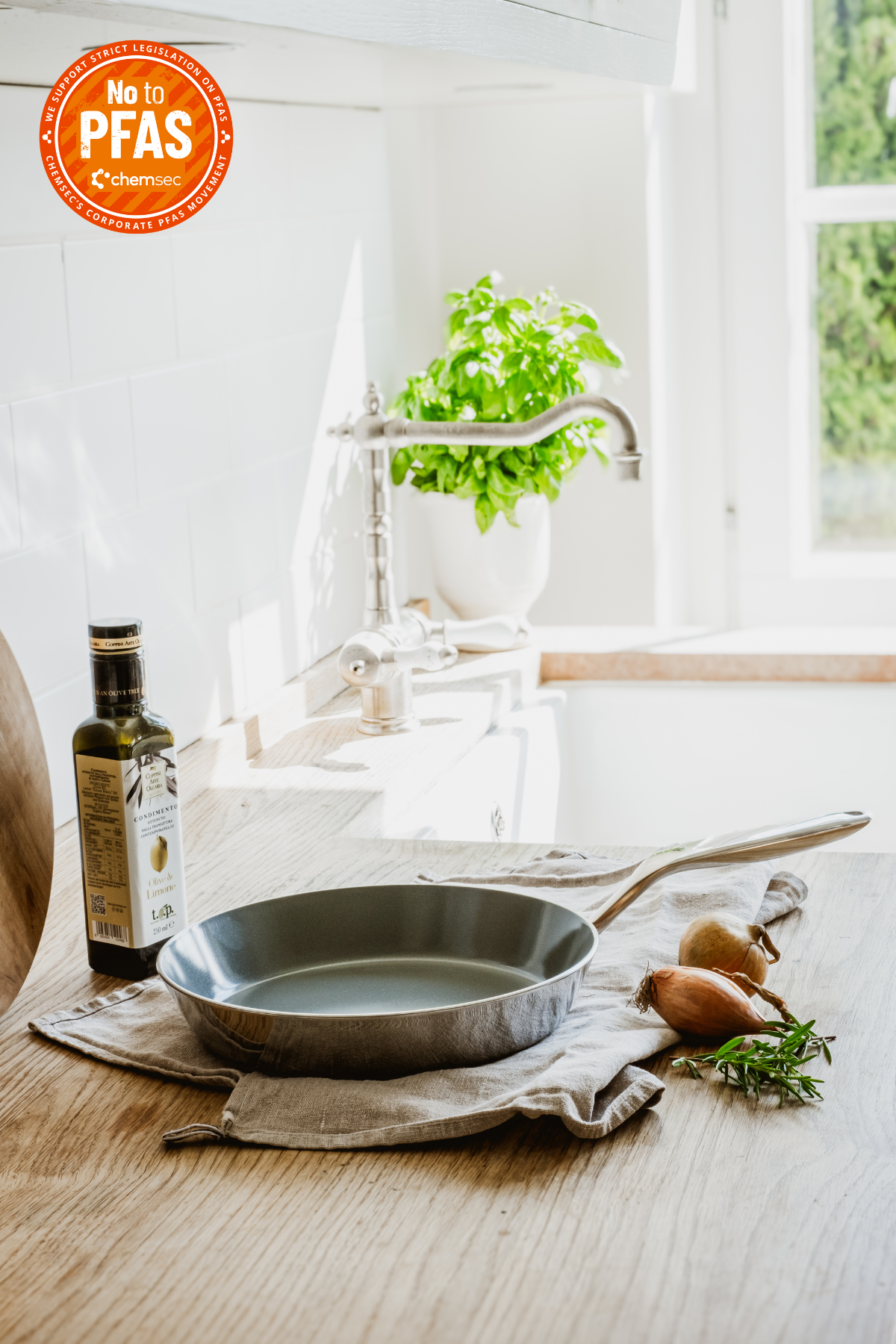Cooking Techniques for Using a Ceramic-Coated Pan
Using a ceramic-coated pan is very similar to using a regular non-stick pan! It’s really easy to use for frying, simmering, and boiling. Cleaning is also effortless since the ceramic coating prevents food from sticking to the pan!
Like with regular non-stick pans, it should not be overheated, which means it cannot be used for deep frying or cooking at high temperatures. All the mentioned series are suitable for all types of cooktops, but it’s always good to remember that induction cooktops are much more powerful than others. This means you need to be careful not to overheat the pan or pot, as the coating may get damaged.
1. Cook at Low Temperatures
If you want your pan or pot to remain in good condition for as long as possible, it's important to use it at low temperatures. Like 'Teflon' pans, the coating can withstand a maximum of medium heat on the stove and a separately specified temperature in the oven:
Royal Pearl (220c)
Cerasafe Pro Triply (200)
Groove (180c)
2. Always Hand Wash Cookware
It’s always a good idea to wash pans and pots by hand right after use. This ensures that no food residues are left on them, which could damage the coating. Acidic foods like tomatoes and lemons can harm the coating because if the pan is left dirty, those ingredients will gradually eat away at the coating and weaken its non-stick properties. For this reason, it’s also important not to store food in the pans and pots, as it can have negative consequences for the coating.
3. Store Your Pots and Pans Properly
Remember to store coated pans and pots in such a way that they are not stacked on top of each other without any protection. If you place one pan on top of another, it may scratch the coating of the lower pan. These scratches can affect the frying ability of the pan, and if there are enough scratches, it may mean that the pan can no longer be used, as food may easily stick to those spots. Pans and pots should be stored in a dry place, either upright or stacked, with padding placed between each pan.
4. Add Fat or Oil to a Cold Pan
A ceramic-coated pan is different in this respect compared to carbon steel or cast iron pans. Before turning the stove on, it’s important to remember to add fat or oil to the pan. The reason for this is to prevent the coating from overheating when empty, which can damage it. An added benefit of this method is that it's easy to see from the fat or oil when the pan is hot enough and when it’s time to add the ingredients to be fried. You can achieve the best sear on meats by slowly heating the pan with oil or fat before adding the meat.

